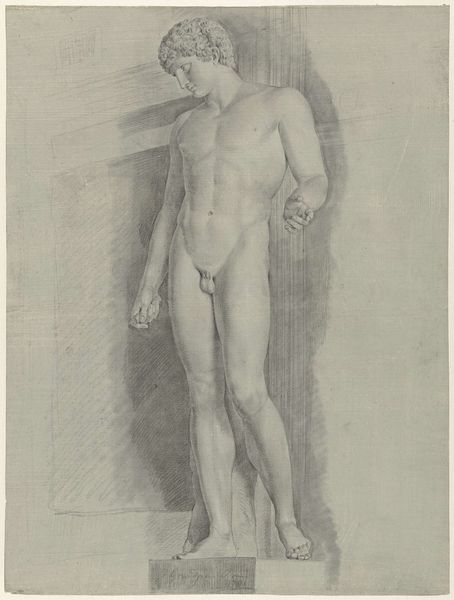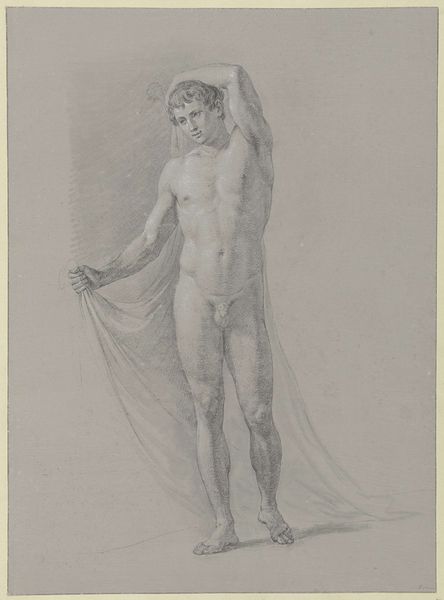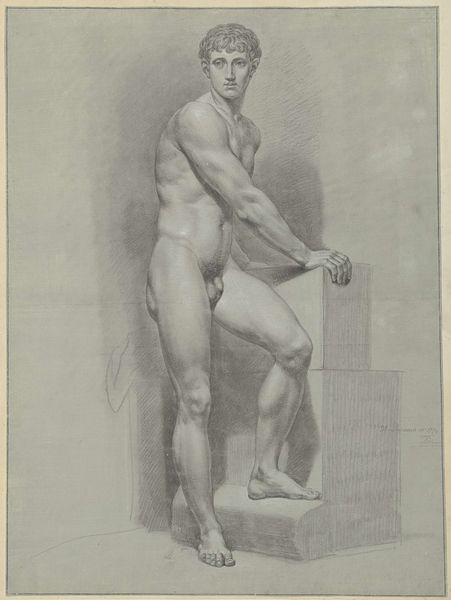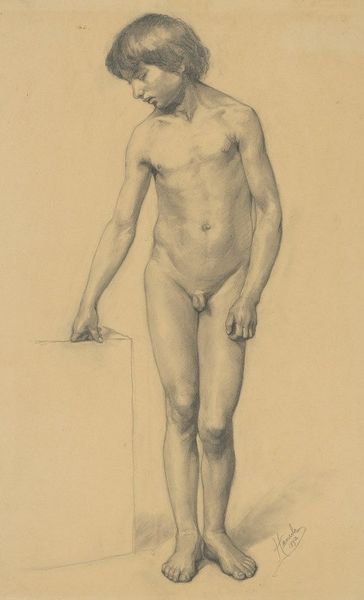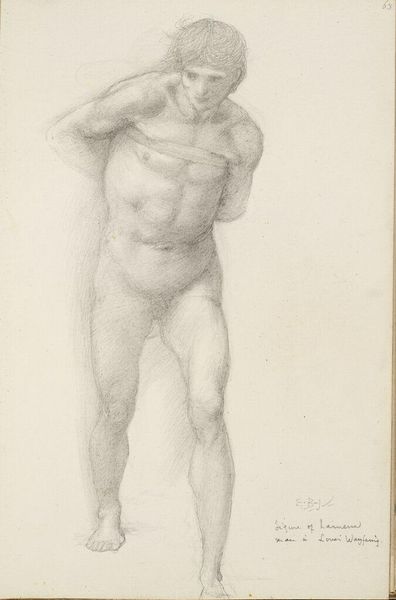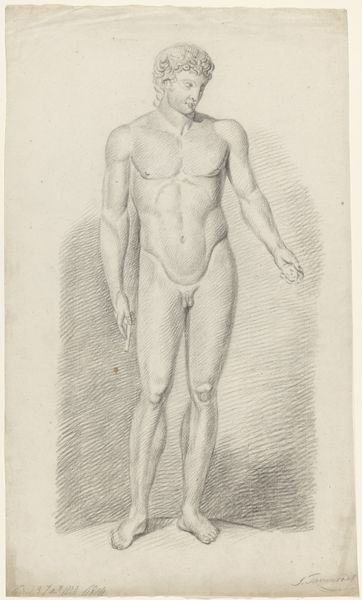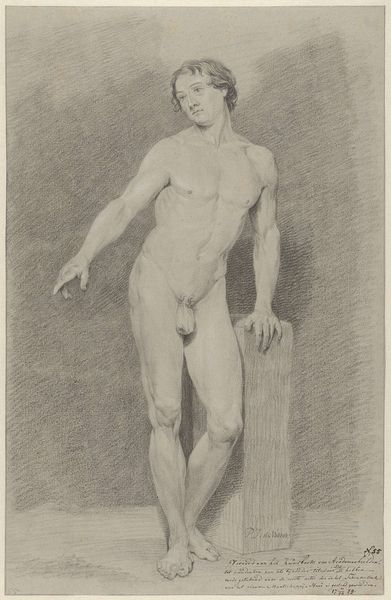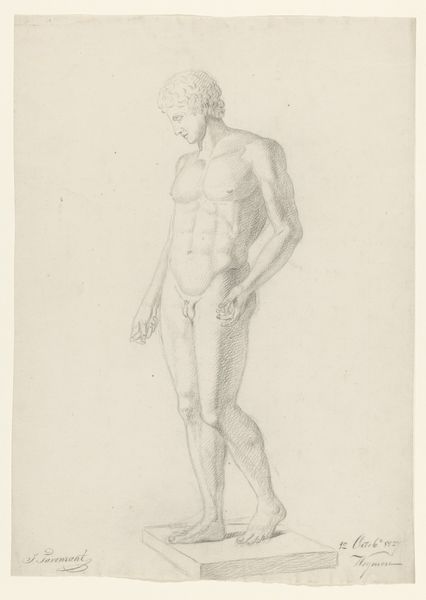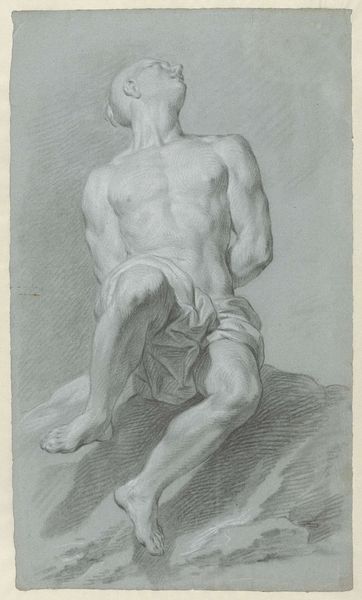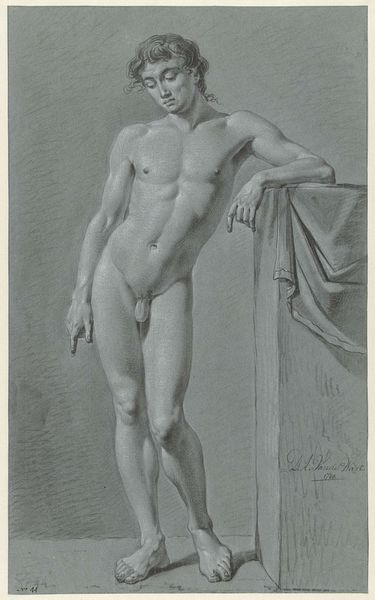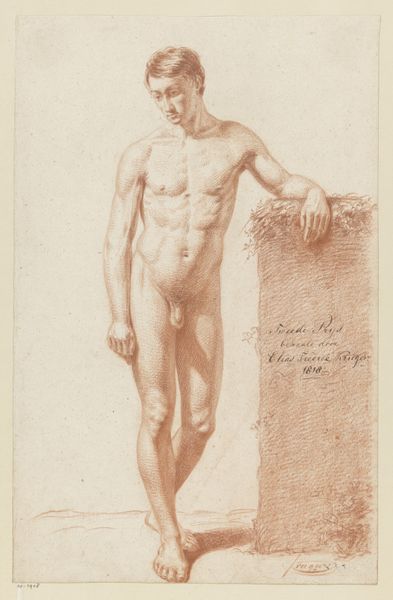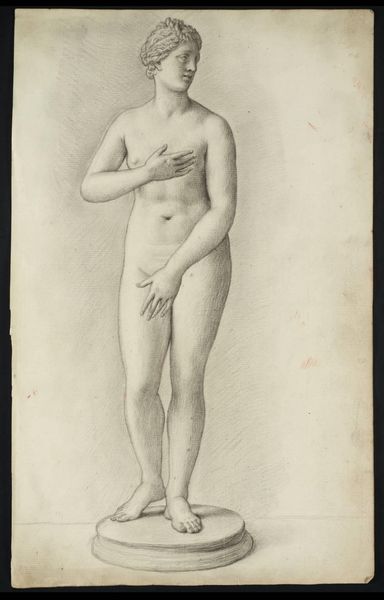
Staand mannelijk naakt, van voren, een doek achter de rug houdend Possibly 1780 - 1784
0:00
0:00
drawing, pencil
#
portrait
#
pencil drawn
#
drawing
#
pencil sketch
#
classical-realism
#
charcoal drawing
#
figuration
#
pencil drawing
#
pencil
#
portrait drawing
#
history-painting
#
academic-art
#
nude
#
realism
Dimensions: height 492 mm, width 373 mm
Copyright: Rijks Museum: Open Domain
Curator: Let’s take a look at this pencil drawing, "Staand mannelijk naakt, van voren, een doek achter de rug houdend," or "Standing Male Nude, front view, holding a cloth behind his back." It's attributed to Jean Grandjean, and likely dates from around 1780-1784. The subject is a nude male figure with classical features, posed against what appears to be a loosely draped cloth. Editor: There's a certain restrained energy to it. The man stands confidently, but there's also a softness in the lines, particularly in the draping cloth and the subtle shading of his body. The figure is very pale, almost fragile. Curator: Right, the drawing seems clearly linked to the academic art traditions of the late 18th century. This kind of study was vital for artists preparing for history paintings or portraits. Consider the economic support system that made it possible: patronage, the art market, and the availability of materials. Did Grandjean likely have formal training in a particular atelier or academy? How might his access to quality paper and pencils shaped the precision we see here? Editor: The focus on the male nude is also significant. It shows an idealization of the human form that comes from classical sculpture. There is great precision. Look closely at the contrast in tone and texture across his torso – from sharp lines denoting muscle structure, to soft hatching providing tonal depth. He uses hatching lines following the direction of the planes. It provides dynamism and directionality to the body. Curator: Exactly. This brings up questions about access. Who had the privilege to study and depict the human form, and whose bodies were deemed worthy of representation? Moreover, how did such images circulate, and what messages did they convey about beauty, power, and social norms? Editor: I also wonder about the process itself. This is a relatively small drawing. You can sense the artist building up the form, the layered application of the pencil, gradually moving towards a refined final image. Also the scale and proportion are close to the ancient Doryphoros. The choice to present an erect yet non-explicit male nudity adds another layer of symbolism: virtue or raw nature. Curator: That's well-put, from the material availability and the studio setting in which it was probably conceived. Thanks, your perspective really sharpens our vision of what we can see in the drawing. Editor: Indeed. Examining how such a classical aesthetic becomes translated across the artist’s choices. The artwork’s internal composition seems quite fascinating.
Comments
No comments
Be the first to comment and join the conversation on the ultimate creative platform.
